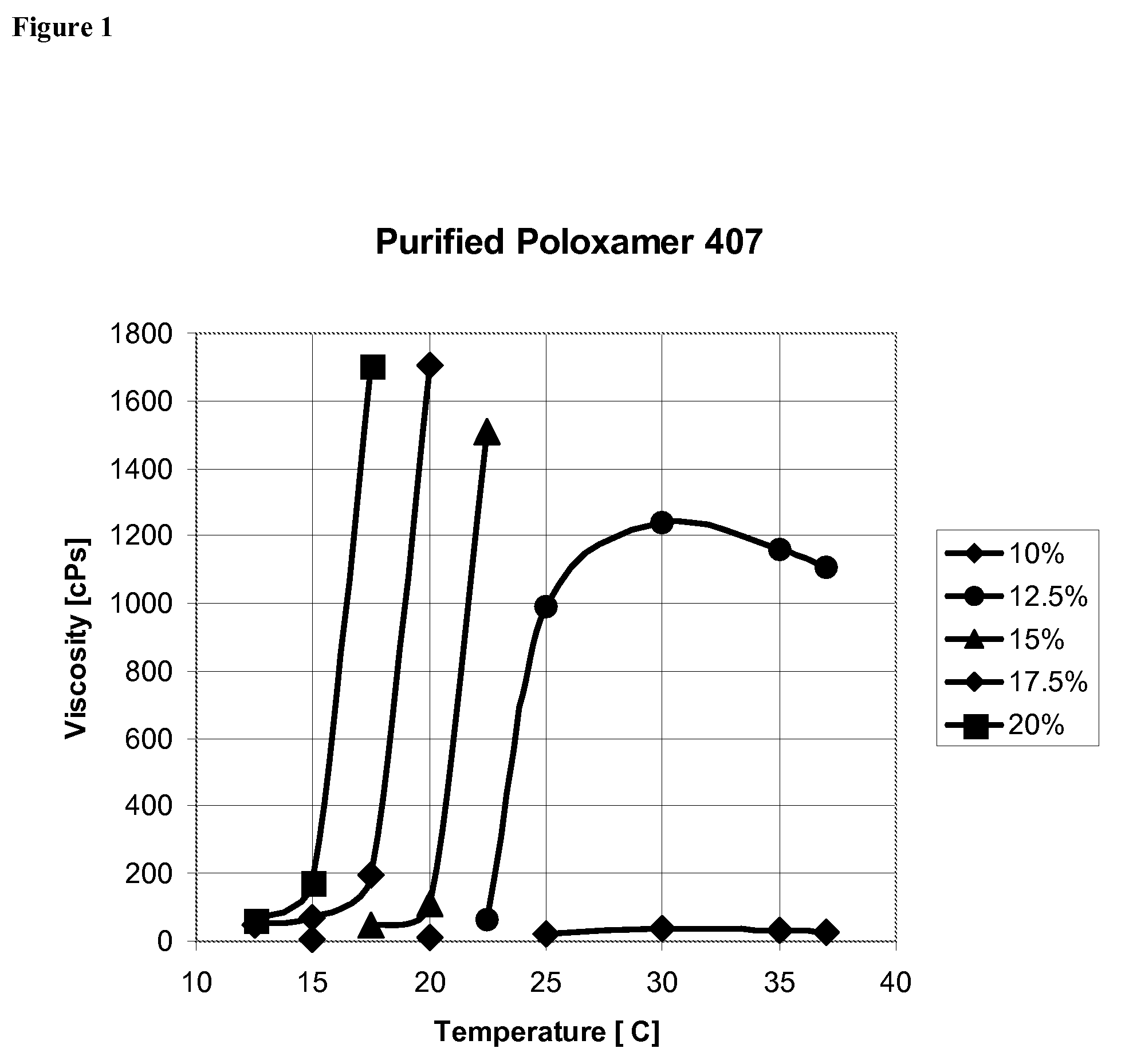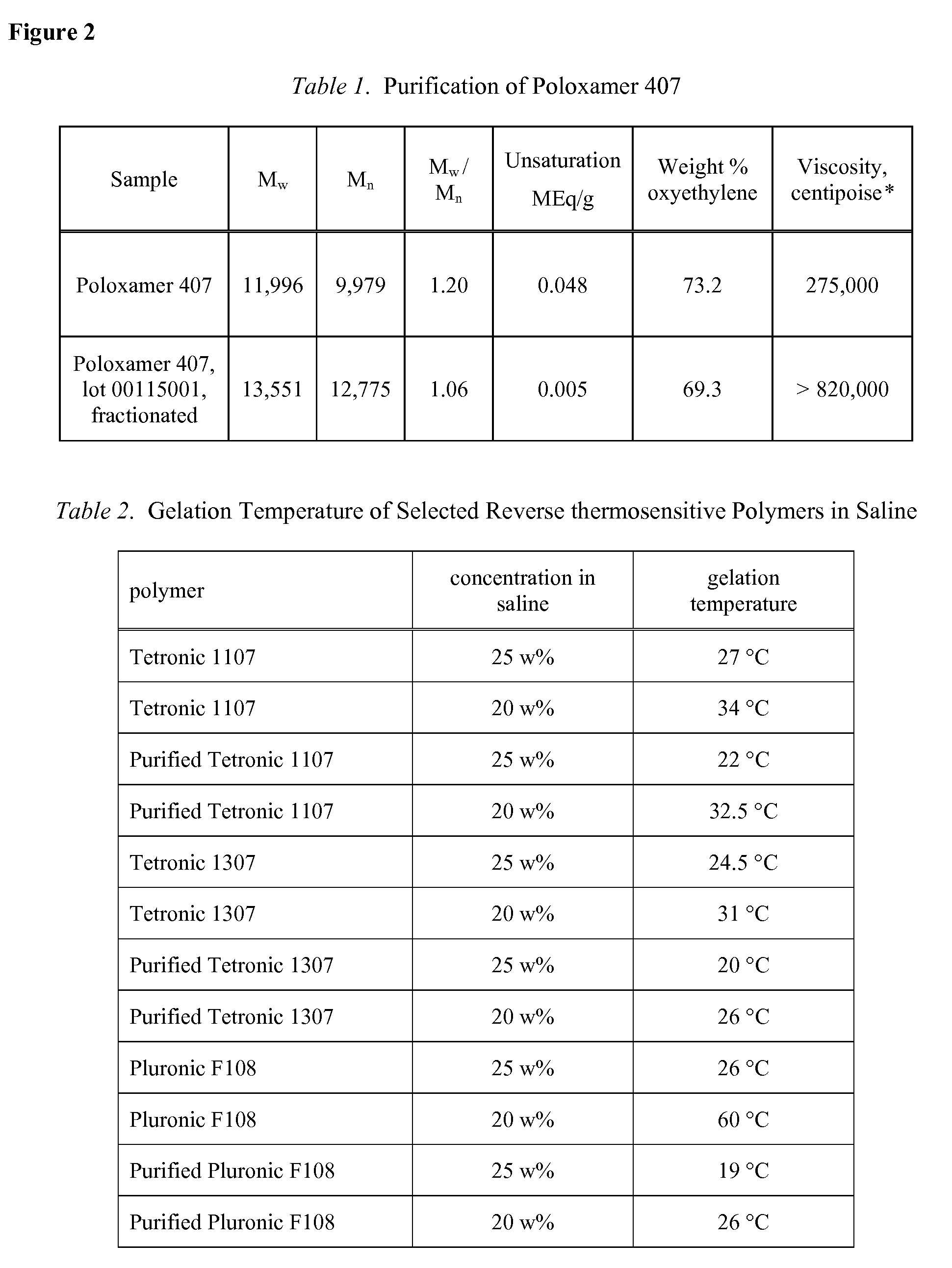Use of Reverse Thermosensitive Polymers to Control Biological Fluid Flow Following a Medical Procedure
a technology of biological fluid flow and reverse thermosensitive polymers, which is applied in the field of use of reverse thermosensitive polymers to control biological fluid flow following a medical procedure, can solve the problems of previous attempts to use water soluble reverse thermosensitive polymers for such arterial closure, and the acute ischemia of the lower leg, so as to facilitate and control the injection of reverse thermosensitive polymer composition, effectively occlude the puncture site, and reduce the risk
- Summary
- Abstract
- Description
- Claims
- Application Information
AI Technical Summary
Benefits of technology
Problems solved by technology
Method used
Image
Examples
example 1
[0149]LeGoo™ (poloxamer 407) at 20% aqueous was used to close a femoral arteries of pigs 1-3, each weighing approximately 30 kilograms.
[0150]Experiment 1—Left Femoral Artery On Pig 1. An 8 French introducer was removed and pulsating bleeding was observed. The column of blood rose approximately 4 cm off leg. 3 mL of LeGoo™ was injected (room temperature) using the nose of a syringe only. Bleeding stopped immediately and the wound remained closed for 0.75 hours until the animal was sacrificed.
[0151]Experiment 2—Right Femoral Artery On Pig 2. An 8 French introducer was removed and pulsating bleeding was observed. Blood welled up in the groin area rapidly (approximately 10 mL in 2 seconds). 3 mL of LeGoo™ was injected (room temperature) using a 16 gauge cannula. Bleeding stopped within seconds and the wound remained closed for 1.5 hours until the animal was sacrificed.
[0152]Experiment 3—Left Femoral Artery On Pig 3. A 10 French introducer was removed and pulsating bleeding was observed....
example 2
[0154]Exploratory Methods. Seven experiments were performed on the femoral and carotid arteries of 2 female swine. Pig 4 weighed 34 kg and Pig 5 weighed 27 kg. The animals were anesthetized with 2-3% of isoflurane with two part of air for one of O2 (4:2) in accordance with the Montreal Heart Institute animal care committee protocol.
[0155]Access to the femoral and carotid arteries was obtained using conventional percutaneous insertion of a 6 French introducer sheath into the arteries on both sides. For introduction, 8 cc of ketamine (100 mg / mL) plus 0.88 cc xylazine (100 mg / mL) were delivered intramuscularly. The left carotid artery was catheterized to visualize the closure site using contrast media under fluoroscopy. The catheter was inserted via carotid artery through a 6 french and advanced down into the iliac artery of the respected side. Two methods of delivering a reverse thermosensitive polymer solution to the arteriotomy site were employed.
[0156]Method 1. A 0.018 guide wire w...
PUM
 Login to View More
Login to View More Abstract
Description
Claims
Application Information
 Login to View More
Login to View More - R&D
- Intellectual Property
- Life Sciences
- Materials
- Tech Scout
- Unparalleled Data Quality
- Higher Quality Content
- 60% Fewer Hallucinations
Browse by: Latest US Patents, China's latest patents, Technical Efficacy Thesaurus, Application Domain, Technology Topic, Popular Technical Reports.
© 2025 PatSnap. All rights reserved.Legal|Privacy policy|Modern Slavery Act Transparency Statement|Sitemap|About US| Contact US: help@patsnap.com


